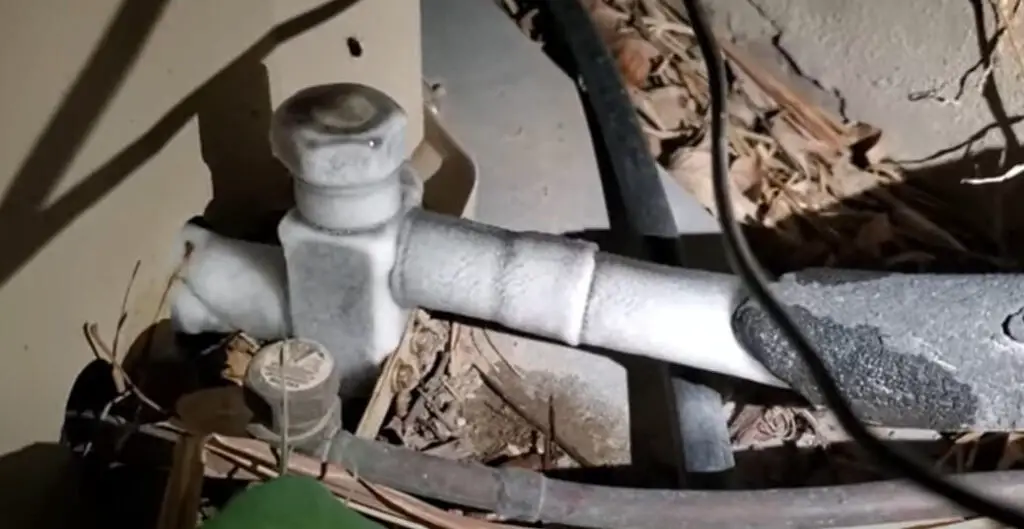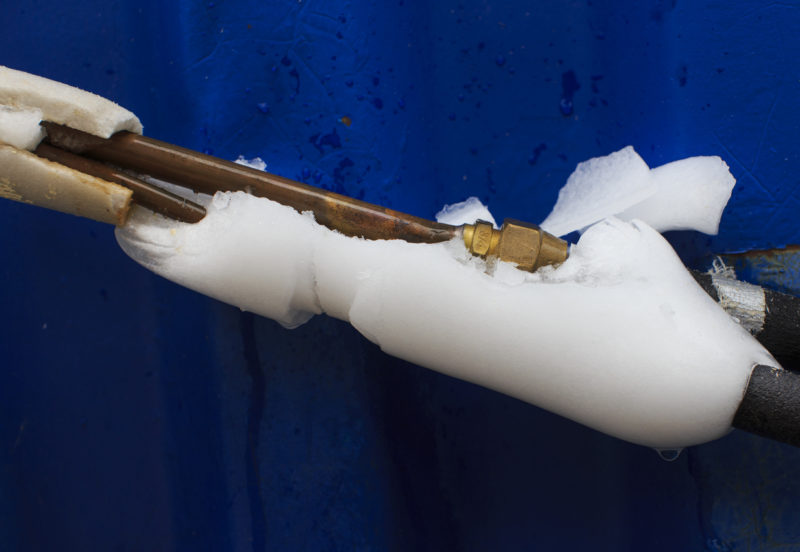How to Handle a Frozen AC Pipe: Specialist Guidance
How to Handle a Frozen AC Pipe: Specialist Guidance
Blog Article
Listed here in the next paragraph yow will discover a good deal of amazing points involving How can I fix an air conditioner’s frozen pipe?.

Introduction
Finding that your a/c pipeline is iced up can be worrying, specifically during warm summertime when you count on your a/c unit the most. Understanding what to do in such a situation is critical to stop further damage to your cooling system and guarantee your convenience indoors.
Recognizing the Causes
Numerous variables can contribute to the freezing of an AC pipe. Comprehending these causes can assist you attend to the problem properly.
Absence of Airflow
One usual source of an icy air conditioning pipe is inadequate airflow. When the air movement over the evaporator coil is limited, it can create the coil to go down below freezing temperature, leading to ice development on the pipe.
Reduced Refrigerant Levels
Inadequate refrigerant degrees in your air conditioning system can additionally lead to a frozen pipe. Reduced refrigerant degrees can trigger the pressure in the system to drop, resulting in the freezing of moisture on the evaporator coil.
Cold Weather Conditions
In cooler environments, freezing temperatures outside can add to the freezing of AC pipes. If your a/c device is not correctly shielded or if there are leakages in the ductwork, cold air can penetrate the system, causing the pipeline to ice up.
Dirty Air Filters
Filthy or stopped up air filters can limit air movement in your AC system, causing different concerns, including a frozen pipeline. It's necessary to replace or clean your air filters regularly to make sure appropriate airflow and avoid ice build-up.
Signs of a Frozen A/c Pipe
Recognizing the indicators of an icy a/c pipeline is important for punctual activity.
Decreased Airflow
If you see a significant decline in air movement from your vents, it might indicate an icy pipe.
Ice Buildup on the Pipe
Visible ice build-up on the cooling agent line or the evaporator coil is a clear indicator of a frozen AC pipeline.
Odd Sounds from the Unit
Unusual audios, such as hissing or bubbling, originating from your a/c system can indicate that there's ice existing on the pipe.
Immediate Actions to Take
When confronted with a frozen air conditioning pipeline, it's essential to act swiftly to prevent more damage to your cooling system.
Shutting off the a/c
The very first step is to switch off your ac unit to avoid the system from running and aggravating the concern.
Checking for Blockages
Check the location around the interior device for any type of obstructions that might be obstructing air flow, such as furnishings or drapes.
Thawing the Pipe
You can make use of gentle approaches like putting towels taken in warm water around the icy pipeline to aid thaw it slowly.
Safety nets
Taking safety nets can aid stay clear of future events of a frozen AC pipeline.
Normal Maintenance Checks
Set up normal upkeep get in touch with an expert HVAC specialist to make certain that your AC system is running efficiently.
Changing Air Filters
Consistently replace or cleanse your air filters to avoid airflow limitations and maintain ideal performance.
Shielding Exposed Pipes
If your air conditioning pipelines are revealed to cool temperature levels, think about shielding them to avoid freezing throughout winter season.
Looking For Professional Help
If DIY techniques fall short to resolve the problem or if you're unsure concerning how to continue, it's best to seek aid from a qualified HVAC technician.
When DIY Methods Fail
If your attempts to thaw the pipe or address other concerns are unsuccessful, it's time to contact an expert.
Relevance of Hiring a Professional HVAC Technician
A licensed HVAC specialist has the competence and tools essential to diagnose and fix issues with your air conditioning system securely and efficiently.
Verdict
Handling a frozen air conditioner pipeline can be an aggravating experience, yet recognizing how to respond can help reduce damages and bring back comfort to your home. By understanding the causes, recognizing the signs, and taking punctual activity, you can properly resolve the concern and avoid future incidents.
G UP? HOW TO FIX IT?
It happens all over America. And the rest of the world probably. It’s the hottest day ever and for some darn reason your AC isn’t cooling the house. You fiddle with the thermostat to try and fix the problem. Nada. All you can do now is go outside and check the AC unit. You make your way there and find your air conditioner unit is frozen! But how?
In this post we’ll cover how you can tell that your air conditioner has frozen (other than the obvious reasons), what could have caused the freeze, and some of the things you can do about your AC freezing up. And if you have a frozen heat pump condenser, read our blog about it to learn what to do! But remember, it is always best to avoid your AC freezing up with an AC tune up. And if you are moving into a home, it's critical to get HVAC inspection so that you are aware of an AC problems before you move in.
Keep reading and you may be able to fix the frozen AC yourself. If you can’t, call an HVAC specialist. If you live in Maryland, call SuperTech HVAC for AC repair. We’ll take care of it.
How Does An Air Conditioning Unit Work?
How you probably imagine an AC works is wrong. Contrary to popular belief, an AC system does not inject cool air into a building. Instead, it removes the heat from inside and transfers it outside. Cool huh? (Pun intended).There are 4 major components among the 3 stations of an air conditioning system: the evaporator coil, the compressor, the condenser, and the refrigerant – a special chemical that links everything together through a closed loop system.
Station 1:
Warm indoor air is sucked into the return vent, through a filter, and blows over the evaporator coil. The heat is absorbed into the cold refrigerant, turning it from liquid to gas. The air, which is now cool, is blown back into the home to areas that your thermostat, i.e. you, has decided.
Station 2:
The refrigerant makes its way outside the house to the compressor, which squeezes the warm refrigerant, raising its gaseous temperature even more.
Station 3:
When the super hot vapor refrigerant reaches the condenser, the last step, the heat is expelled and absorbed into the outdoor air. The refrigerant instantly cools, which changes it from gas back to liquid form. The cold liquid refrigerant is now ready to return to station 1 and repeat the process.
Is Your AC Freezing Up? Here Are The Signs:
As you may have guessed, your air conditioner unit freezing up on a hot day is not normal.
If this happens, there's no need to panic. Often the issue can be solved with a little troubleshooting. If the AC unit is left frozen for too long however, you may find yourself with a bigger problem.
First things first, how do you know your AC is frozen?
Well, the obvious sign is the ice on your refrigerant line-set pipe. Simply check between your outdoor AC unit and your home's exterior wall to see whether your AC line frozen.
You might also have a frozen evaporator coil. This one's not as easy to check. You'll need to open a panel on the indoor unit to inspect. Don't do this unless you're handy. If you aren't, call an HVAC pro like SuperTech HVAC or you may damage something in the process.

As an avid person who reads about What Do I Do If My AC Pipe Is Frozen, I imagined sharing that short article was really useful. Do you know about somebody else who is fascinated about the topic? Take a moment to promote it. I treasure reading our article about Have a Frozen AC Line? Here’s How to Fix It.
Click Here! Report this page